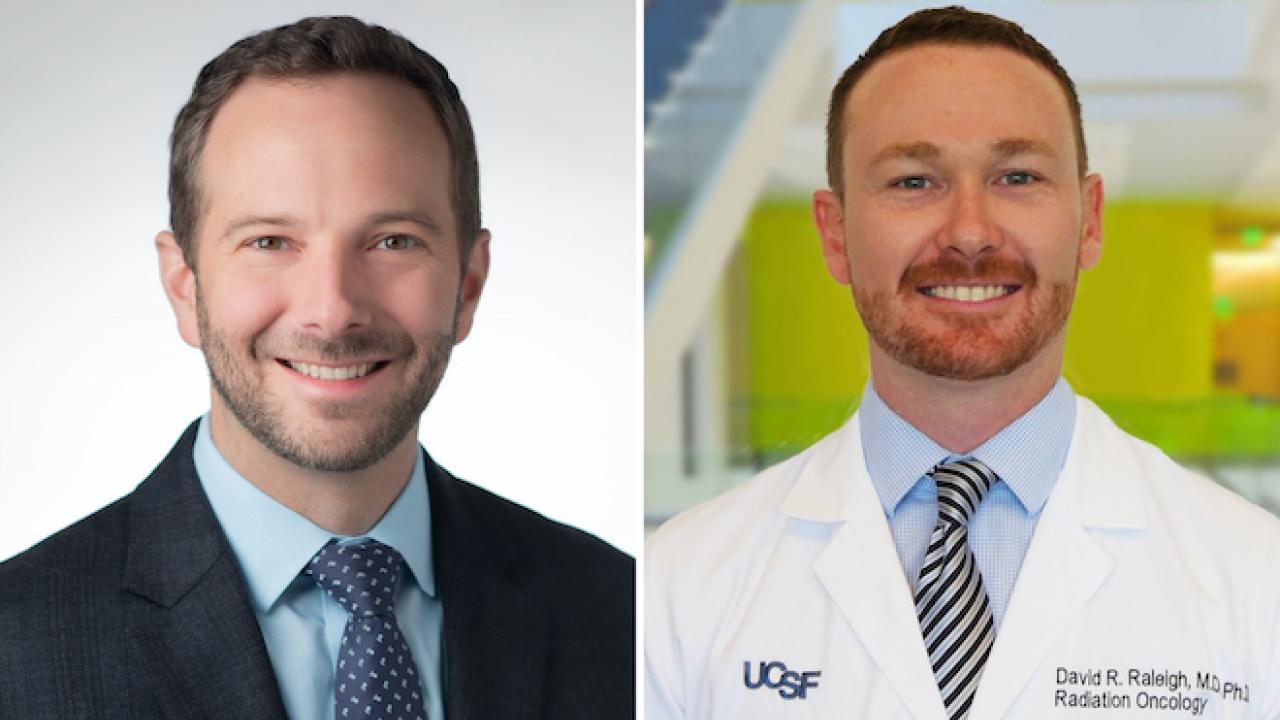
Stephen Magill, MD, PhD (left) and David Raleigh, MD, PhD (right)
With 34,210 new diagnoses projected this year in the United States,1 meningiomas are the most common primary brain tumor. While the majority of meningiomas are low grade and typically respond well to surgery and radiotherapy, high grade meningiomas are still poorly understood and often recur despite treatment. All chemotherapy trials to date have failed to show benefit for these tumors, so new treatment targets are urgently needed.
“Differences within tumors called intratumoral heterogeneity has increasingly been recognized as a source of resistance to cancer treatments,” said UCSF physician-scientist David Raleigh, MD, PhD (Assistant Professor, Departments of Radiation Oncology and Neurological Surgery). For instance, different regions of an individual’s tumor can harbor different gene mutations, leading to different characteristics, behaviors, and treatment responses. Thus, a therapy that targets a specific mutation may only be effective for a subset of the tumor cells, allowing the tumor to continue growing despite targeting that specific mutation.
To better understand the extent of variation, or intratumoral heterogeneity, in meningioma, Dr. Raleigh and his team launched a comprehensive analysis of 86 meningioma samples, collected from separate locations within 13 patients’ tumors.
Published today in Nature Communications,2 Raleigh and colleagues leverage bioinformatics, histopathology, radiology, and even human cerebral organoids, to characterize the range of intratumor heterogeneity found in meningioma.
“We found that high grade tumors have greater heterogeneity than low grade tumors, which may explain their lack of response to existing treatments.” said first author and neurosurgeon Stephen Magill, MD, PhD, who recently graduated from the UCSF Neurological Surgery Residency Program. Dr. Magill is currently completing a minimally invasive cranial and endoscopic skull base fellowship at The Ohio State University.